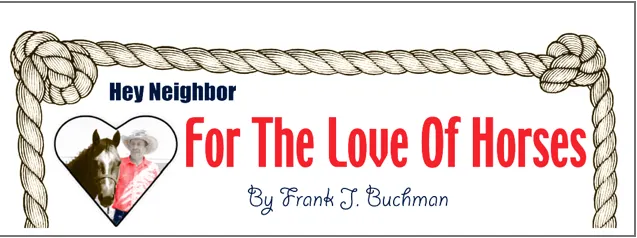Sore legs no horse.” That may not be completely accurate, but most likely horses with the best legs will be race winners.
“Entire horse health is essential, but all things considered sound legs are most important for running. I do everything in my power to take care of my horses’ legs,” said Tami Purcell Burklund.
Certainly, few have as much diverse experience with champion running horses. “I started out on rodeo horses, was a jockey for 32 years and am now barrel racing professionally,” Burklund verified.
The winningest professional female Thoroughbred and Quarter Horses race rider changed jockey saddle to become a National Finals Rodeo qualifier. “Whether on the track or around the barrel pattern in the arena, horse leg care is quite similar,” Burklund insisted.
Featured clinician about barrel racing, Burklund provided additional lifetime experience horse management advice at the EquiFest of Kansas in Topeka.
“I have so much stuff here, but I always want to be competitive, be the winner,” Burklund opened comments. “This is my opinion doing what I think’s best with the products here.
“What works for me doesn’t have to be the same for everybody,” she continued. “Something that is right for one horse can be completely different for another.”
Pointing out that veterinarians are important for horse health, Burklund said, “I want to minimize that as much as possible.”
Certain horses sometimes require special leg treatment at home, but most sound horses get along fine using common sense conditioning.
“I feel my horse’s legs every time before I ride and again when I get done,” Burklund declared. “I mean feeling entirely over all four legs for tenderness, a flinch, ouch, anything that could mean soreness or injury.”
Leg care for running horses sharply intensifies when it comes time to hit the road. “Hauling puts lots of pressure and stress on a horse’s legs.” Burklund emphasized. “There’s so much bouncing and jarring around no matter how well built the trailer is.”
When a long haul is on the agenda, leg care might begin a week ahead. “I use a ‘Quick Relief’ mud-type product, put it on very thick from top of the knee to the pastern,” she demonstrated.
“It actually goes on cold, but heat takes effect when wrapped with a newspaper. Then I put a softened standing bandage around the covered leg,” Burklund described.
Heat and cold do work closely together intermittently creating a drawing effect tightening tendons to prevent injury. “Keep the legs cool, then they become hotter at race time, and require cooling after the run,” the racer related.
It’s essential to unload the horse every four to five hours during long hauls. “They don’t need a long rest, just walk the horse around some, make sure its breathing okay,” Burklund advised.
Work picks up upon arrival at the arena. “I’m often the first one at a rodeo and the last one to leave,” the jockey-cowgirl said. “It takes a lot of time to get my horse ready to run and then ready to travel again.”
Upon arrival, hauling protection is removed and legs are hosed down completely cleaning off every bit of the mud product. “Water is a miracle drug of sorts in itself for horse leg health,” Burklund commented. “Spraying legs daily with water can aid conditioning, tightening tendons, reducing inflammation, resolving sore spots before becoming an injury.”
Boots generally are put on all four legs of the horse at race time. “I want to protect the legs in every way I can. There are so many possible injuries that a horse can get from running and turning so fast,” she said.
There are certain horses that resist wearing boots, maybe just on two legs, possibly all four. “Every horse is different, and sometimes you have to change your plan,” Burklund recognized. “You never want your horse hurt, but he sure isn’t any good either if he won’t run.
“If a horse won’t allow boots to be put on or run with them, more caution and care are needed. Make sure your horse hasn’t injured himself or becomes sore after running,” she continued.
Win, place or lose, the running horse needs attention as soon as the race ends. “The horse is hot, his legs are hot,” the rider acknowledged. “Walk and cool your horse down, get him relaxed and calm again as possible.”
He can be cooled down over the entire body with water. Legs must be hosed down thoroughly for an extended time. “Get the heat out of the legs, cool the legs down.
“Then let your horse relax, feel every leg carefully from top to bottom for soreness, swelling, possible injury,” Burklund recommended. “If there’s the slightest question, do it again, and make sure the horse is sound.”
Ice pack bandages are placed on the horse’s legs for continued cooling at the rodeo or back in the trailer.
“Your horse’s legs must feel good to win any race you’re in,” the champion racer conclude.
CUTLINE
Tami Purcell Burklund provided insights to products and methods to care for a horse’s legs to be a champion racer.



